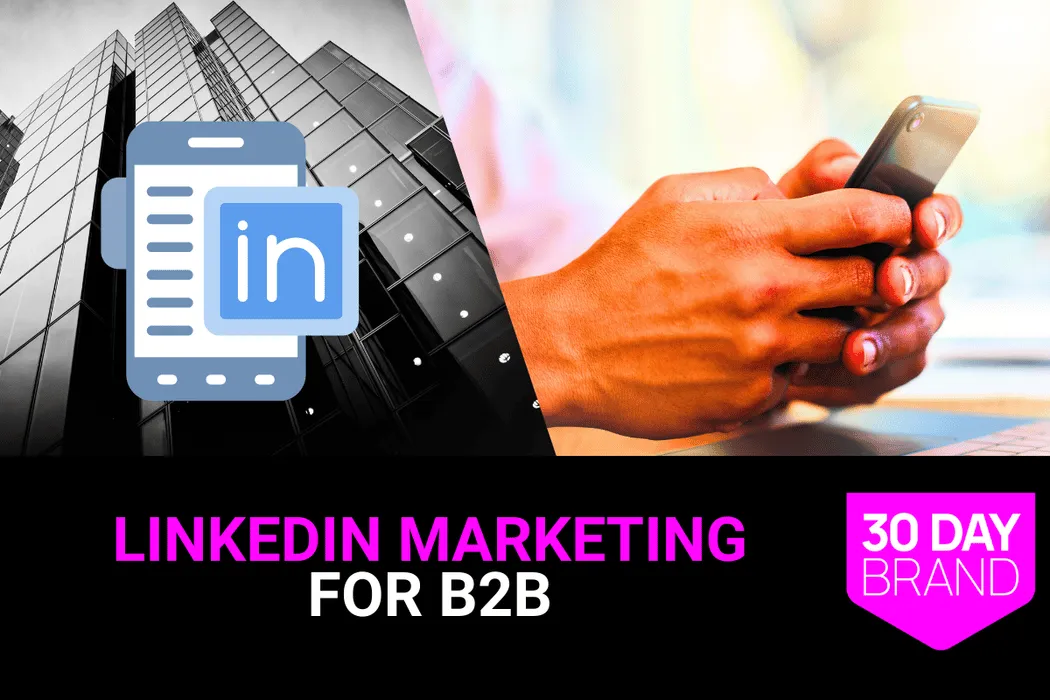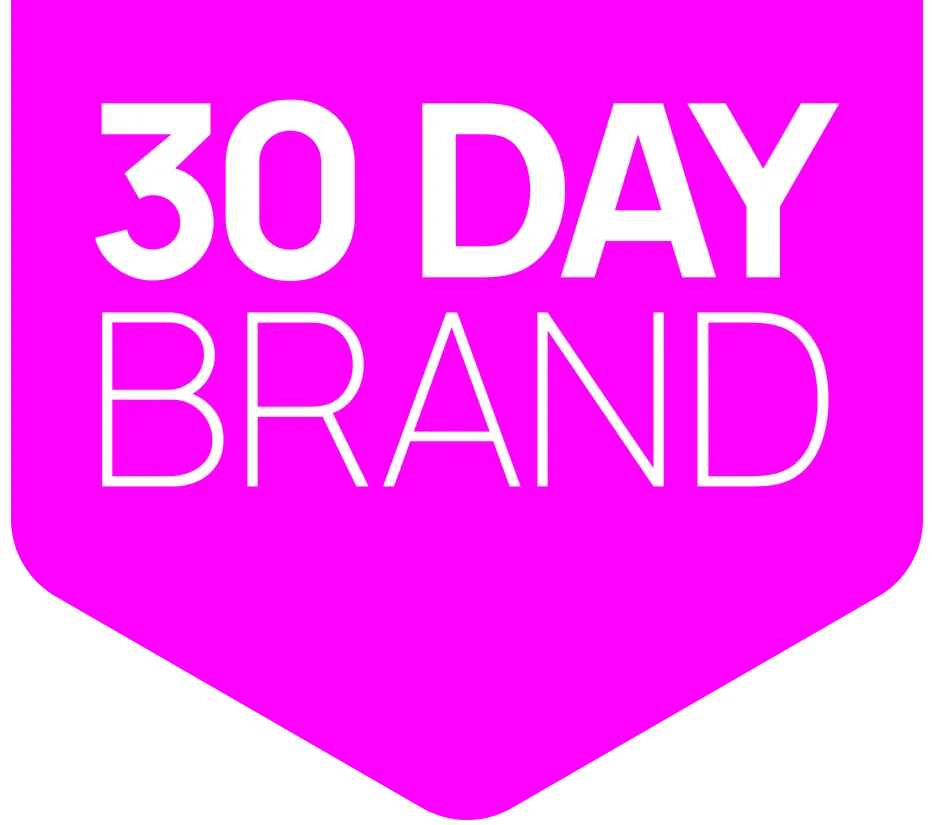
LinkedIn Marketing for B2B: The Complete Guide to Professional Network Success
LinkedIn Marketing for B2B: The Complete Guide to Professional Network Success
Quick Definition
LinkedIn Marketing for B2B = Leveraging the world's biggest professional network to land quality clients, establish yourself as an industry leader, and close deals faster. It's not about racking up random connections; it's about building a predictable pipeline.
The Real Cost of Sleeping on LinkedIn
If you're running a B2B business or consulting practice, you're probably missing out on serious revenue right now. While you're grinding away on Instagram or Twitter hoping to convert casual scrollers into clients, your ideal customers - the ones with actual budgets and pressing problems - are all hanging out on LinkedIn, wondering where you've been.
Here's a wake-up call: LinkedIn generates 80% of B2B social media leads (Sprout Social, 2024). Yet too many businesses treat it like an online resume they update once a year. Sound familiar? If you're tired of your expertise going unnoticed and spinning your wheels on platforms that don't deliver, it's time to get serious about the most powerful B2B marketing tool out there.
This guide cuts through the fluff to give you a practical roadmap for LinkedIn marketing success. We'll cover everything from crafting a profile that converts to creating content that actually brings in leads - no generic advice, just real talk from someone who's been there. For a deeper dive into building your overall approach, check out our guide on LinkedIn marketing strategy.
Why You Can't Afford to Ignore LinkedIn
Let's be real: if you're in B2B and not actively marketing on LinkedIn, you're shooting yourself in the foot. This isn't just another social media platform - it's basically the world's biggest business conference that never ends. Here's why it matters:
Your Buyers Live Here: We're talking about 1 billion+ members, including 65 million decision-makers. These aren't people killing time watching reels - they're actively looking to solve business problems and spend budget.
People Are in Work Mode: When someone's on LinkedIn, they're thinking about business challenges and solutions. That means they're way more likely to engage with your offering than when they're checking Facebook during their coffee break.
It's a Trust Factory: LinkedIn is the only place where your expertise, track record, and social proof all live under one roof. Want to build the trust needed for big B2B deals? This is your fastest route.
The Network Actually Works: Unlike other platforms, LinkedIn's algorithm favors content from your professional network. It's like having a built-in referral system that actually delivers.
Deals Actually Close Here: When 4 out of 5 LinkedIn members are decision-makers, you're not just reaching influencers - you're reaching people who can actually sign off on purchases.
LinkedIn vs. Other Platforms
Time is money, and you can't be everywhere. So why LinkedIn? Let's get real about other platforms:
Building Your LinkedIn Marketing Strategy: A Real-World Guide
I'll cut straight to the chase - randomly posting on LinkedIn won't magically bring in clients. I've wasted months doing just that before figuring out what actually works. Here's the real deal on turning LinkedIn connections into paying customers:
Getting Noticed (Without Being Annoying)
Think about why you follow certain people on LinkedIn. It's usually because they share useful stuff, right? That's exactly what you need to do. Drop knowledge bombs, add thoughtful comments on other posts, and be someone worth following. No fancy tricks needed - just be genuinely helpful. This is where your clear business messaging becomes the foundation of everything.
Moving from "Random Connection" to "Go-To Expert"
Once people recognize your name, it's time to show them what you're made of. Share those client success stories. Talk about the messy problems you've tackled. I love telling stories about projects that went sideways and how we fixed them - it shows you've been in the trenches.
Converting Followers into Clients
Here's where most people mess up - they go straight for the hard sell. Instead, make it natural. "Hey, this seems like something you're dealing with. Want to hop on a quick call to brainstorm?" Much better than sliding into DMs with a sales pitch. For specific tactics on this conversion process, check out our guide on LinkedIn lead generation.
Content That Doesn't Put People to Sleep
Remember, LinkedIn isn't Instagram. People are here to solve work problems. So give them what they want:
War stories from your own experience
Behind-the-scenes looks at your process
Quick tips they can use today
Real conversations in the comments
The key is consistency and value. Don't just broadcast - engage. Comment on other people's posts, share your insights, and build genuine relationships. For a comprehensive approach to creating content that resonates, read our detailed guide on LinkedIn content marketing.
Make Your Profile Do the Heavy Lifting
Your profile should answer "What's in it for me?" right away:
Write a headline that spells out who you help
Tell your story (warts and all) in your About section
Show off your best work in your Featured section
Stay active so you don't fall off people's radar
Your profile isn't a resume - it's a sales page. Every element should be optimized to convert visitors into leads. For a step-by-step walkthrough of optimizing every section, check out our comprehensive guide on LinkedIn profile optimization.
Finding Quality Leads
Two ways to play it:
Create stuff that makes people come to you: This is the inbound approach. Share valuable insights, build authority, and let prospects find you.
Reach out personally (but be human about it): This is outbound prospecting. Research your prospects, find genuine connection points, and start real conversations.
The best LinkedIn strategies combine both approaches. Your content marketing makes your outreach more effective, and your outreach helps you build relationships with people who might not have found you organically.
The Money Route
Yeah, LinkedIn Ads are expensive. But man, the targeting is worth it if you've got the budget. Start small though - I burned through way too much cash before getting it right.
LinkedIn Ads work because:
The targeting is incredibly precise (job titles, company size, industry)
The audience is in a professional mindset
The competition is lower than other platforms
The lifetime value of B2B clients justifies higher costs per click
Just remember: LinkedIn's not about overnight success. Build real relationships first, and the rest falls into place naturally.
LinkedIn Marketing: Measuring What Actually Moves the Needle
Let's be real - if you're putting time into LinkedIn, you want to know it's not just disappearing into the void. Here's what you should actually track to know if your efforts are paying off:
First up, engagement. Are people responding to what you're sharing? Real engagement - meaningful comments, shares, and conversations - tells you if your content resonates or falls flat.
Yes, follower count matters (though it's not everything). Think of it as a temperature check on your growing influence. But what really counts? Those website clicks. They show people care enough to learn more about you.
The money metrics? Lead generation. How many genuine prospects are you connecting with? If you're running ads, keep close tabs on what you're spending per lead. No one wants to throw good money after bad.
Focus on metrics that actually impact your bottom line:
Qualified leads generated from LinkedIn
Meetings booked through LinkedIn connections
Revenue attributed to LinkedIn activities
Cost per lead (if running ads)
Profile views from your target audience
For a comprehensive breakdown of tracking your return on investment, read our detailed guide on LinkedIn marketing ROI.
Taking Action on LinkedIn (Because Reading Another Guide Won't Cut It)
Look, you get it now. You know why LinkedIn matters and how to use it. But here's the uncomfortable truth - none of this works if you stay on the sidelines.
Here's your next move:
Step 1: Start with our FREE Brand Message Analyzer Tool to run your message through our analyzer. Even brilliant LinkedIn tactics bomb with muddy messaging.
Step 2: Start somewhere small. This week, pick one thing and actually do it. Maybe it's fixing that "meh" headline or reaching out to five people you actually want to know. Don't try to implement everything at once.
Step 3: Ready to get serious? Our SCALE System helps build brands that naturally attract ideal clients, with LinkedIn playing a key role in your overall strategy.
Step 4: Want expert help turning LinkedIn into your lead engine? Let's talk. We'll help you build a LinkedIn marketing system that delivers predictable results.
Here's the deal - while most people are either ignoring LinkedIn or doing it badly, you've got a window of opportunity. But it won't stay open forever. The time to act is now.
FAQ
How much LinkedIn time is enough?
Focus on consistency over marathon sessions. A solid 30 minutes daily beats a random three-hour weekly sprint. Split your time between creating content (10 minutes), engaging with others (10 minutes), and connecting with prospects (10 minutes). The key is making it a daily habit, not a weekly chore.
Should I do ads?
They're not mandatory, but they can speed things up. Organic reach isn't what it used to be. If the math works out in your favor - meaning you can generate more revenue than you spend - go for it. Start with a small budget ($500-1000/month) and test what works before scaling up.
What's the biggest rookie mistake?
Treating LinkedIn like a digital resume and waiting for magic to happen. This platform rewards active participants who share real insights and build actual relationships before selling. You can't just post your credentials and expect clients to line up.
When do results kick in?
Keep it real - some see early wins within weeks, but the real impact usually hits around 6-12 months of steady effort. It's a marathon, not a sprint. The businesses that treat LinkedIn as a long-term relationship-building platform are the ones that see the biggest returns.
Personal profile or company page - which matters more?
Personal profiles get 5x more engagement than company pages on LinkedIn. People connect with people, not brands. Focus on building your personal brand first, then use your company page as a supporting resource. Your personal profile should be your primary LinkedIn marketing asset.
How do I know if my LinkedIn marketing is actually working?
Track the metrics that matter: qualified leads generated, meetings booked, and revenue attributed to LinkedIn. Don't get distracted by vanity metrics like total followers or post likes. If you're not generating business results within 90 days of consistent effort, you need to adjust your strategy.










